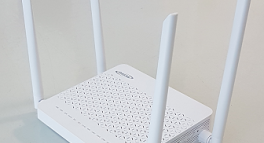
Current unusual situation was absolutely unexpected for all economy sectors. Telecommmuncation operators and content providers were not an exception in this case. The information campaign „StayAtHome” caused that people stayed at home in front of their TV or mobile screens and did not go out despite the nice weather. As a result, the overloaded international OTT video servers decreased the quality to protect the subscribers, but Polish VoD and OTT servers did not follow this trend.
In this case, does a problem with bandwidth really exist in Poland or is there a need to decrease the quality of video?
In the past few days access networks have been struggling with the biggest stress-test since the last decade. It is also time to think for some operators, whether they are well-prepared to meet the requirements of subscribers regarding the issue of emergency and stability. It may seem that mobile telephone operators, offering „unlimited” access to the Internet through the LTE network, are in the worst case. This is because an employee at home is, so to speak, a bigger appetite for transfer, especially when kids are learning online too. The subscriber pays more attention to delays, packet loss, when for example uses videoconferences or VPN. For cable operators, this an opportunity to attract those people who are disappointed from the mobile Internet.
I decided to check the mobile Internet, not the fiber optic one. It is said that since some time, there is a migration need towards the XGS-PON solution which offers the approx. speed 10Gbit. Thus, we asked 5 FTTH network operators from different parts in Poland for the results of the burden on GPON ports from the last 2 weeks ( 3-17th March 2020). On average, all operators noticed an increase in the Internet usage by almost 30%.
1. Port OLT, active number of ONTs - 48
Downstream:
-
average use: (95%) 190Mbit/s
-
maximal use: 327Mbit/s
2. Port OLT, active number of ONTs - 38
Downstream:
-
average use (95%) 189Mbit/s
-
maximal use: 429Mbit/s
3. Port OLT, active number of ONTs - 75
Downstream:
-
average use: (95%) 202Mbit/s
-
maximal use: 430Mbit/s
4. Port OLT, active number of ONTs - 86
Downstream:
-
average use: (95%) 240Mbit/s
-
maximal use: 507Mbit/s
It is interesting to note that despite working at home or children playing inside, the upstream is not significantly visible. The downstream shows more dense/ continuous use than previous more striking fluctuations that become more round now.
The differences in use may vary from operators primarly due to the type of television services (multicast, unicast or OTT) and the penetration of these services. Certainly, operators offering TV in the multicast technology, than unicast or OTT, are
in much better situation.
Some operators offering television services based on multicast or broadcast, who decoded televison channel during epidemic, are dragging subscribers away from using the Internet or OTT services, thus relieving the infrastructure. Certain people may be surprised by such a low use of the telecommunication infrastructure. Some operators noticed that the reason of speed limit is not caused by GPON, but by WiFi, which slows down the intentions of subscribers, even though they have faster packet. Sometimes, the subscriber has 500Mbs but ha salso ONT with 300Mbit WiFi module (2.4GHz n).
As a producer of GPON ONT solutions, we noticed a high interest in replacing the old type of subscriber equipment for the new one, as it has better WiFi and works in the new standards. Actually, only one issue remains open and this is replacing equipment in the subsriber’s house, preferably by the subscriber. To this end, we are preparing a set of video guides for the operators and subscribers GPON technology is not the bottleneck in the access to the Internet, despite the increased bandwidth consumption in recent years, there is still a lot of space. But it does not mean that fiber optic operators can sleep peacefully. Subscribers will pay more attention to the quality of connections to key services, for example to Skype, videoconferencing, corporate VPN or the issue of delays while playing.
Who is XGS-PON for?
The statistics do not reflect all cases. Recently, a few operators have reported the need for testing XGS-PON products in the selected locations, saying that it caused by the high consumption of bandwidth and demand from business customers. In
2019 we provided XGS-PON as the aggregation solution for the wireless stations. For this reason, we expect a higher interest in XGS-PON solutions especially from businesses (Passive Optical LAN) and telecommunication operators in terms of convergence of mobile services and businesses based access infrastructure. The use of XGS-PON for individual customers will increase with falling prices.

